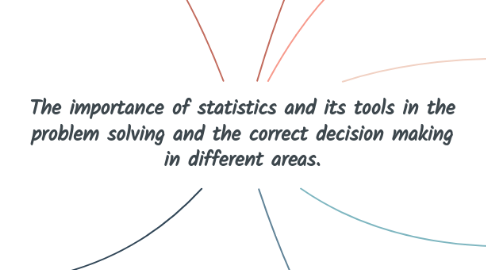
1. Basic concepts
1.1. Population
1.1.1. It is a set of all the elements that present a common characteristic to be studied.
1.2. Sample
1.2.1. It is a subset of selected members of a population (Triola, 2009, p.41).
1.3. Individuo
1.3.1. It is each of the elements that make up the population.
1.4. Variables
1.4.1. It is a characteristic of a sample that can take different values.
2. Purpose of the statistic
2.1. Its purpose is to facilitate the solution of problems to know and provide information that is useful to obtain results.
2.2. Specifying the purpose of the statistics we can mention:
2.2.1. Knowing the reality in an observation or phenomenon.
2.2.2. Determine what is typical or normal of that observation.
2.2.3. Determine the changes that the phenomenon presents.
2.2.4. Relate two or more phenomena.
2.2.5. Determine the causes that originate the phenomenon.
2.2.6. Make estimates on the future behavior of the phenomenon.
2.2.7. Obtain conclusions from a smaller group (sample), to extend them to a group higher population).
3. ¿What is statistics?
3.1. It is a set of methods for planning studies and experiments, collecting data, and then organizing, summarizing, presenting, analyzing, interpreting, and drawing conclusions based on the data (Triola, 2009, p.40).
4. The importance of statistic
4.1. Statistics is an important tool because being analytical, it allows planning research and quantifying reality, making it possible to interpret, analyze, and draw conclusions from these phenomena.
5. Statistics classes:
5.1. They are classified according to the subject, sector or subject of studies, for example: Industrial, agricultural, transport, communications, health, education statistics, etc
6. Statistics is divided into two large branches:
6.1. Descriptive statistics:
6.1.1. It is responsible for gathering, organizing and presenting the data in an orderly and simple way with the support of tables among others.
6.2. Inferential statistics
6.2.1. It is a set of methods that is responsible for analyzing data based on a sample in order to draw conclusions.
